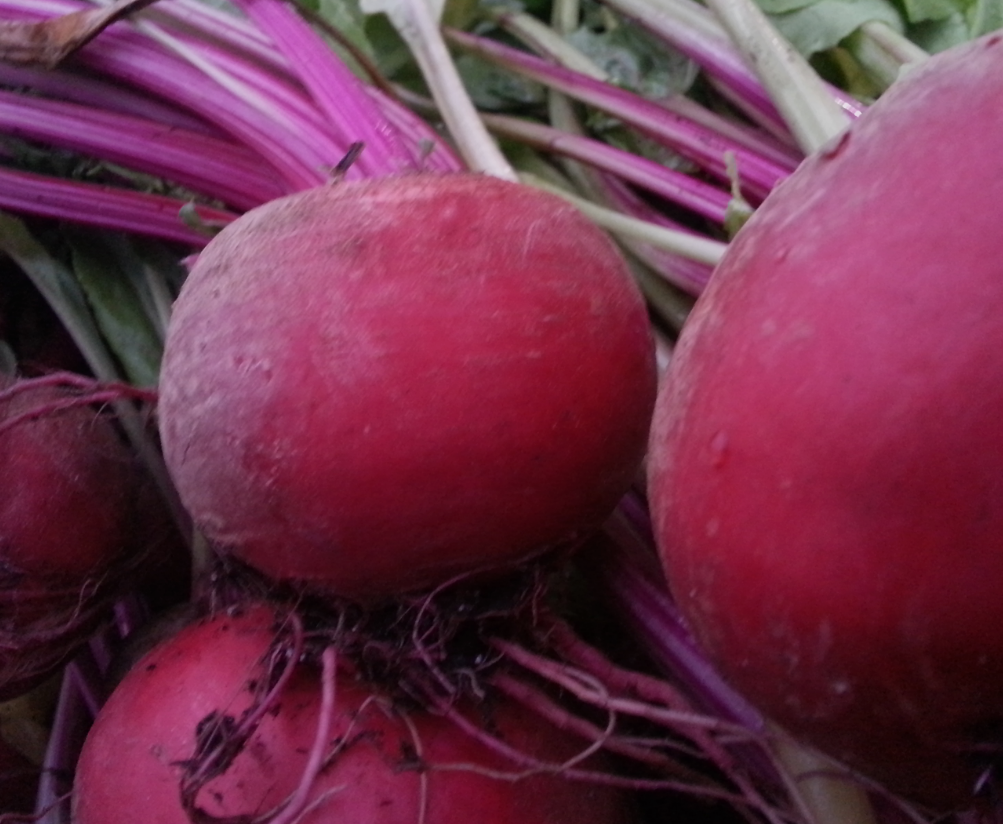 What are they and what do I do with them?
What are they and what do I do with them?
Beets are divine. I have found that most who do not like them have only had them pickled and out of a can or jar. If you recall, they are in the beet family with swiss chard and sugar beets. I will not get too deep into utrition this time, but yes, they do have some natural sugar with 45 calories in 100g. The root is a good source of B-complex vitamins, glycine beatine (good for the blood and heart, and a variety of minerals. The tops are a good source of vitamins C and A, as well as antioxidants. Getting beets with the stems is a veritable two for one. Many of the levels, especially with the roots, will diminish with cooking. Steamed, pickled, fresh in salads, juiced, roasted, and baked are a few ways to prepare the roots. The leaves and stems are great sauteed, added to soups, and most ways brassica greens are prepared.
Storage
When you get home immediately remove the stems as they will dry out the root and rob it of vitamins. Don’t feel bad, the stems have got all the love they need. They stems and root should be washed well once. The roots can go in the high humidity drawer and will keep for weeks. The stems, in a perforated bag will keep well for a few days, then have a steady decline.
Preparation
Wash well and scrub roots, Scrub even more if you don’t mind eating the skin. From there they can be left whole if boiled or roasting for certain recipes. They can be cut in chunks and roasted with other root vegetables. They can be cubed and shredded, and even cooked and pureed and made into a borscht.
Recipes
[catlist name=”Recipes” tags=”beets” orderby=title order=asc numberposts=-1]

One thought to “Beets”
Shredded beet hash: shred beets in food processor, cook in a skillet with plenty of butter and salt as you would hash browns until done to your liking – we like them a little crisp – then top with a couple over medium fried eggs.
Comments are closed.